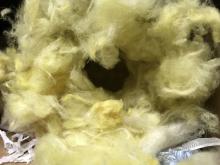Information Possibly Outdated
The information presented on this page was originally released on September 8, 2017. It may not be outdated, but please search our site for more current information. If you plan to quote or reference this information in a publication, please check with the Extension specialist or author before proceeding.
Protect home, property from persistent mice
STARKVILLE, Miss. -- Now is the time of year when many of us notice the pitter-patter of small feet in our attics or walls.
Complaints of mice in and around homes are common in the fall. The house mouse is one of the most troublesome and costly rodents in the United States. House mice damage structures and contaminate food sources meant for humans, pets, livestock and other animals.
During the fall, both the house mouse, which spends most of its life in human dwellings, and the deer mouse, which spends warm seasons outside, are searching for food and warm shelter to nest and breed during the winter.
Mice are highly adaptable wildlife that most likely landed in the U.S. centuries ago aboard early settlers’ ships. Their ability to breed at a young age and year-round is key in the success of mouse populations. Mice can become sexually mature in just a few months and can have up to eight litters in one year. Although mice have a life span of only 9-12 months, females can have 50-60 offspring in that short period.
During Mississippi’s summer, mice survive remarkably well on the wealth of food outside, including insects, seeds, plants and berries. However, when the weather becomes cool and food supplies scarce, mice move indoors to live under appliances or inside walls, furniture, crawl spaces, storage shelters and storage boxes.
Mice are opportunistic feeders that consume about 10-15 percent of their body weight in food each day, constantly nibbling on a varied diet. They will chew through bags of bread, rice, cereal and other items that are high in nutritional content. Pet food bowls and containers are also likely sources of food for mice.
Telltale signs of these nocturnal creatures in your home include small, rod-shaped droppings and gnaw holes in walls, baseboards and other fibrous materials. A musky odor, especially in crawl spaces and other enclosed areas, also suggests a mouse presence. Mice store food in small piles that may indicate nesting sites. Small piles of shredded paper, cardboard, upholstery and even pet hair may serve as mouse nests.
Controlling and removing mice is challenging but possible. Mice can squeeze through a quarter-inch hole, which makes it a tough proposition to seal every tiny opening in a house or shelter. Rodent control experts suggest stuffing copper mesh or other flexible yet sturdy material into small holes around a property. Caulk and other sealants can help seal cracks in the foundation of a structure, as well as openings around vents and pipes. Most importantly, eliminate food supplies by storing all grains and pet food in airtight or metal containers.
Many commercial mouse control methods are available. Most popular are snap traps, glue boards and poison bait pellets that can be safely and easily administered by following the manufacturers’ directions and wearing proper protective clothing and gloves. In the case of an extreme infestation, you may need a rodent control company or exterminator. For further information on rodent control, contact the MSU Extension Service.

Editor’s Note: Extension Outdoors is a column authored by several different experts in the Mississippi State University Extension Service.






